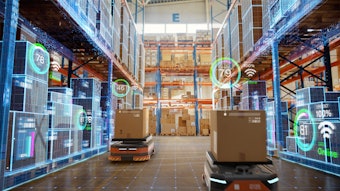
For years, Scope 3 emissions reporting has been seen as an overwhelming compliance burden - complex, data-heavy, and resource-intensive. But when done right, it can unlock leaner, smarter, and more sustainable supply chains. Rather than a regulatory headache, companies that embrace emissions tracking as a strategic tool can cut costs, build resilience, and even gain a competitive edge.
Beyond compliance: Turning Scope 3 into a strategic asset
With regulations like the EU’s Corporate Sustainability Reporting Directive (CSRD) and California’s Climate Corporate Data Accountability Act (CCDAA) now in force, businesses must track not just their direct (Scope 1) and energy-related (Scope 2) emissions, but also the vast network of indirect emissions (Scope 3) spanning suppliers, logistics, and product end-of-life impacts.
But the best companies don’t treat Scope 3 as a box-ticking exercise. Zero100’s research shows that industry leaders leverage emissions data to optimize costs, strengthen supplier relationships, and increase operational efficiency.
Consider supply chain resilience: Mapping emissions hotspots helps businesses identify suppliers at risk of regulatory non-compliance, financial instability, or environmental disruption. A robust emissions baseline acts as a risk heat map, guiding smarter procurement decisions.
Emissions sources vary industry by industry and even companies in similar industries may have significantly different Scope 3 footprints. Industry-wide, emissions footprints vary significantly. These differences highlight why generic, one-size-fits-all approaches often fall short, and emissions tracking should be embedded into core business operations, rather than just a compliance exercise.
Tackling data complexity: From bottleneck to breakthrough
To turn these insights into action, companies must first overcome a fundamental challenge: data complexity. At its core, emissions calculations rely on two data types – activity data (measuring emissions-generating activities), and emissions factors (multipliers converting activity data into greenhouse gas outputs).
Most organizations use one of three approaches, each with varying levels of accuracy:
- Spend-based calculations: estimating emissions using costs of purchased goods/services
- Average-data calculations: applying industry averages based on mass or other units
- Supplier-specific calculations: collecting primary data from suppliers
Not only is primary data more valuable because it gives a clearer picture of reduction opportunities than simple averages do; it is also more accurate, especially given industry averages are inherently conservative.
Some leaders are equipping suppliers with training, e-learning tools, and direct support to improve emissions tracking.
The key to success seems to be moving beyond one-size-fits-all methodologies to build granular, scalable data ecosystems that enable action, not just reporting.
Tech and AI: The ESG game-changer
This is where technology steps in. Perhaps the most promising development in Scope 3 reporting is the emergence of AI and automation technologies, transforming Scope 3 reporting from a labor-intensive task into a strategic asset. Zero100 research found that companies aggressively hiring for digital skills are 57% more likely to hit their science-based targets (SBTi) than less tech-savvy competitors.
New AI-powered platforms help companies bridge data gaps, streamline supplier collaboration, and automate emissions calculations. They can:
- Generate synthetic product footprints to fill information voids
- Create digital twins of supply chains to visualize emissions hotspots
- Simulate the impact of design, sourcing, and operational changes
The most valuable innovations focus on three areas: filling data gaps, enabling supplier collaboration at scale, and providing actionable intelligence beyond compliance metrics.
When embedded into procurement and operations, these technologies shift emissions tracking from an afterthought to a continuous improvement driver.
A practical roadmap for supply chain leaders
Scope 3 may be complex, but breaking it into manageable steps makes it achievable:
- Establish a high-level emissions baseline – Identify key hotspots and use them to guide strategic supplier engagement. Prioritize speed of insight over data perfection.
- Invest in supplier collaboration – Move beyond industry averages by collecting primary data from suppliers. Start with those contributing most to emissions.
- Embed emissions into procurement decisions – Making sustainability non-negotiable in supplier evaluations and risk assessments.
- Leverage AI and automation – Adopt digital tools to streamline reporting, fill data gaps, and generate actionable insights. Bain & Company estimates that sustainability teams spend 70% of their time on data tasks; technology can free them to focus on impact.
- Prioritize data accuracy – Move beyond spend-based estimates to real-time, supplier-specific tracking. One VP at a major distributor found a 65% emissions reduction after switching to real customer use data.
Gaining a competitive edge
As regulations tighten, companies face a choice: scramble to comply or seize the opportunity to lead. Unlocking what the matryoshka doll – reaching deep into nth-tier supplier emissions – is challenging but transformative. Businesses that master this will drive innovation, strengthen supplier relationships, and build more resilient operations capable of withstanding future disruptions.
Scope 3 is more than an ESG obligation. Companies that take the lead now won’t just keep pace with regulations; they’ll define the competitive landscape of tomorrow.


![Pros To Know 2025 [color]](https://img.sdcexec.com/files/base/acbm/scn/image/2025/01/Pros_To_Know_2025__color_.67856cb23da64.png?auto=format%2Ccompress&fit=crop&h=191&q=70&w=340)























